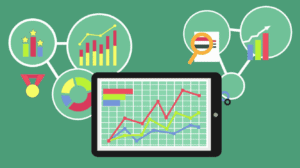How Digital Marketing Works?
When it comes to digital marketing, there are many things to keep in mind. Traditional marketing may be effective, but it is outdated and limited when it comes to modern consumers. This is where digital marketing comes in. This marketing strategy involves using various types of digital media, such as Social media, Email marketing, Pay-per-click advertising, and Inbound marketing.

Email marketing
Emails are a common means of marketing. These communications can be used to announce upcoming events and special offers. They can also be used to maintain awareness of new products or services. Regardless of the reason for using these communications, it is important to understand how email marketing works in digital marketing.
In order to use email as a digital marketing channel, you must first have an email list. You must also be able to monitor and measure the results of these campaigns. Email marketing can keep your business in front of potential customers and lead them to act.
Pay-per-click advertising
Pay-per-click advertising (also known as PPC) is a powerful tool in the digital marketing arsenal. It allows businesses to increase website traffic and build brand awareness. These are vital elements for success in today’s digital world. If you’re not familiar with this advertising method, this guide will help you get started.
PPC advertising allows for instant and targeted advertising for specific demographics. These ads cost the advertisers a fixed amount each time a user clicks on their ad. The amount is usually between $1.50 and $25, and it allows advertisers to target specific groups of people. For example, if you’re a professional photographer looking to expand your business, pay-per-click advertising could prove to be a great tool.
Inbound marketing
If you’re not familiar with the inbound methodology, it describes the process of attracting and nurturing prospects. Essentially, this strategy focuses on the entire customer journey, from the initial interest to the purchase. By focusing on the experience of your customers, you will build a strong foundation for a flywheel effect that generates new prospects and accelerates the conversion to a customer.
The first part of inbound marketing involves attracting visitors to your website. The second step involves converting visitors into leads. Lead generation involves collecting contact information from website visitors and developing relationships with them.
Conversion optimization
Optimizing the conversion process is an essential aspect of digital marketing. It increases revenue and allows companies to use their resources efficiently. In many cases, it can even transform a website into a no-touch sales funnel. This method will generate revenue for a business without having to hire a sales force to sell it. In addition, conversion rate optimization can be used to direct existing customers to new features and improve the user experience. By improving the conversion flow, you can provide a more pleasant user experience, while reducing friction.
Conversion rate optimization is important for all types of businesses, regardless of their size or industry. For example, if you are a lead generation company, you may want to improve your website to capture a customer’s email address and collect some of their personal information. This information can then be used to contact them and make them a lead. Meanwhile, if you are a B2B/SaaS company, you should focus on helping customers find what they’re looking for. And of course, you need to capture their interest and support their purchasing decision.

Recent Comments